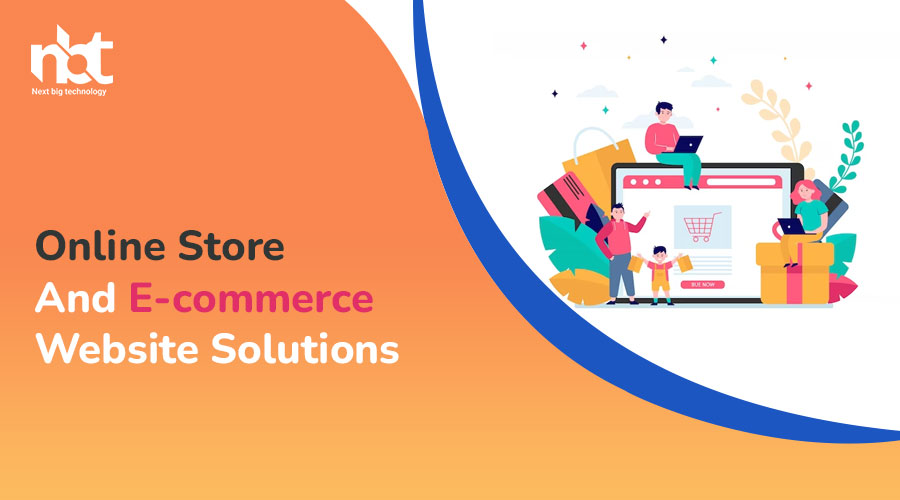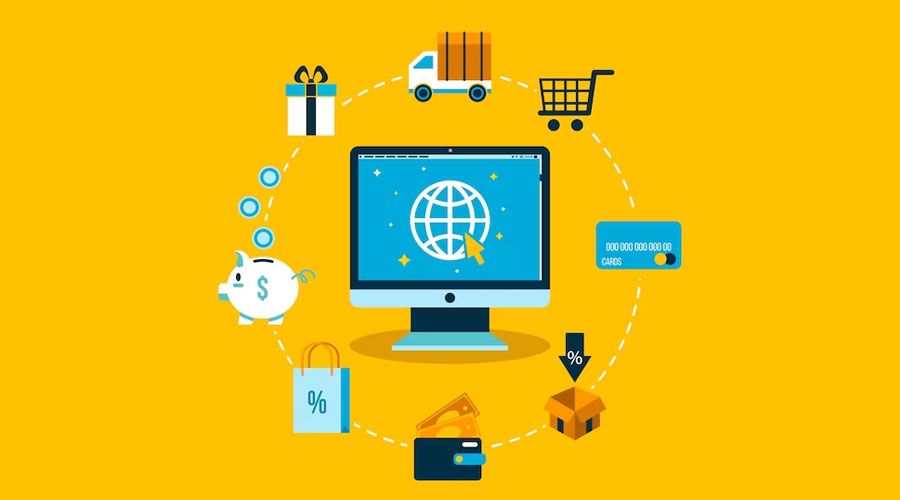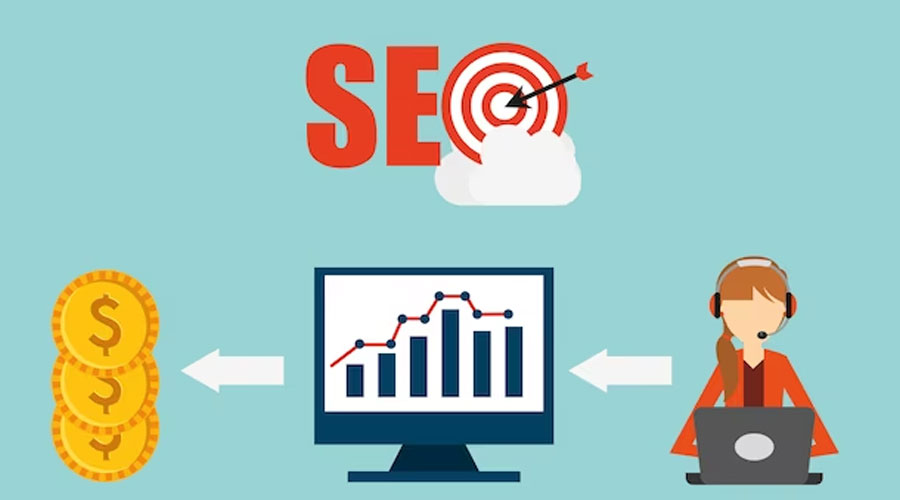Table of Contents
Introduction
In a world that’s increasingly connected and digital, the concept of a brick-and-mortar store is no longer sufficient to cater to the demands of modern consumers. The rise of e-commerce has been nothing short of revolutionary, redefining the way businesses operate and consumers shop. E-commerce solutions, including online stores and e-commerce websites, have become the essential tools that businesses need to succeed in this digital age.
This comprehensive guide seeks to explore the multifaceted realm of e-commerce solutions, offering a deep dive into the strategies, technologies, and best practices that underpin the digital marketplace. Whether you’re a seasoned business owner aiming to expand your online reach or a budding entrepreneur with dreams of e-commerce success, this guide is designed to equip you with the knowledge and insights necessary to flourish in the highly competitive world of online retail.
The E-commerce Revolution
The internet’s transformative power has shattered the limitations of traditional commerce. What started as a novel concept in the early 1990s has evolved into a trillion-dollar industry today. Small boutiques, multinational conglomerates, and everything in between now have a place in the vast digital marketplace.
Trends and Statistics
Here’s a snapshot of some key trends and statistics that encapsulate the contemporary e-commerce landscape:
- Global Reach: E-commerce, by its very nature, has transcended geographical boundaries, allowing businesses to serve customers worldwide. This means that no matter where your business is located, you can reach a global audience.
- Mobile Dominance: The proliferation of smartphones and tablets has catalyzed the rise of mobile commerce or m-commerce. Consumers increasingly use mobile devices for online shopping, emphasizing the importance of mobile-friendly e-commerce solutions.
- Marketplaces Rule: E-commerce giants like Amazon, eBay, and Alibaba have become household names. These marketplaces provide a platform for third-party sellers to tap into massive customer bases.
- Product Diversity: E-commerce encompasses a staggering variety of products and services. From tangible goods like electronics and clothing to digital products, subscription services, and even digital downloads, the possibilities are boundless.
- Personalization: Consumers are now accustomed to personalized shopping experiences. This can range from product recommendations based on past purchases to tailor-made content and discounts.
- Sustainability: With the growing emphasis on environmental issues, consumers are increasingly seeking eco-friendly and ethical products. Responsible business practices are now a significant selling point.
- Emerging Technologies: Innovations such as augmented reality (AR), virtual reality (VR), and artificial intelligence (AI) are being harnessed to elevate the shopping experience to new heights.
These trends are a testament to the dynamic and ever-evolving nature of e-commerce. Adapting to this evolving landscape is vital for businesses. To navigate this intricate ecosystem effectively, e-commerce solutions play an indispensable role.
The Goal of This Guide
The purpose of this guide is to empower businesses and entrepreneurs to understand, adapt, and thrive in the digital marketplace. It will meticulously dissect the various components, technologies, strategies, and trends that constitute e-commerce solutions. Whether you’re just starting your e-commerce journey or seeking to refine your existing online store, the information provided here will prove invaluable.
The journey begins by dissecting the essential components of e-commerce solutions, ranging from website design and e-commerce platforms to payment gateways, product management, and order fulfillment. The subsequent sections will delve into the types of e-commerce solutions, host-hosted and self-hosted platforms, and the considerations that come with each.
Armed with this knowledge, we will guide you through the process of choosing the right e-commerce solution for your specific needs. We will discuss the pivotal role that mobile commerce plays in the current landscape and how you can optimize your online store for mobile users. We’ll also explore the critical domains of e-commerce SEO and marketing, customer experience, and retention strategies.
Finally, we will cast our gaze toward the future of e-commerce, where new technologies and trends are set to shape the landscape in the years to come. This comprehensive guide will conclude by reinforcing the importance of adapting and innovating in the ever-changing world of e-commerce.
Now, let’s begin our journey into the intricate world of e-commerce solutions.
Types of E-commerce Websites
n addition to the two primary types of e-commerce solutions (hosted and self-hosted platforms), there are several specialized types of e-commerce websites that cater to specific business needs and niches. These specialized e-commerce websites offer unique features and functionalities tailored to particular industries and customer preferences. Let’s explore some of these addon types of e-commerce websites:
- Multi-Vendor Marketplaces: Multi-vendor e-commerce websites enable multiple independent sellers to list and sell their products on a single platform. Examples of multi-vendor marketplaces include Amazon, eBay, and Etsy. These platforms allow businesses to create a marketplace where vendors can manage their own product listings and sales within the larger e-commerce ecosystem.
- B2B E-commerce Websites: Business-to-business (B2B) e-commerce websites focus on facilitating transactions between businesses rather than selling to individual consumers. These platforms are essential for wholesalers, manufacturers, and distributors looking to streamline bulk purchases, automate procurement processes, and negotiate pricing and terms.
- Subscription Box E-commerce: Subscription box e-commerce websites have gained popularity in recent years. These websites offer subscription-based services where customers receive curated products or services regularly. Examples include Birchbox (beauty products), Blue Apron (meal kits), and Dollar Shave Club (personal care products).
- Niche E-commerce Websites: Niche e-commerce websites target specific industries or product categories. They cater to a dedicated customer base with unique preferences. Examples of niche e-commerce websites include Zappos (footwear), Wayfair (furniture and home decor), and Chewy (pet products).
- Auction Websites: Auction e-commerce websites enable users to bid on products, with the highest bidder winning the item. eBay is a prominent example of an auction-based e-commerce platform. These platforms provide a dynamic and competitive shopping experience.
- Dropshipping Websites: Dropshipping e-commerce websites connect online retailers with suppliers who directly ship products to customers. The retailer doesn’t hold inventory, making it a low-risk and low-capital way to start an e-commerce business. Platforms like Oberlo and AliExpress integrate with popular e-commerce platforms to facilitate dropshipping.
- Social Commerce: Social commerce leverages social media platforms to sell products directly to users. Businesses can set up shops on platforms like Facebook, Instagram, and Pinterest, allowing users to discover and purchase products without leaving their social media feeds.
- E-commerce for Digital Products: Some e-commerce websites focus exclusively on selling digital products, such as e-books, software, music, and digital art. These platforms provide secure downloads and access to digital content upon purchase.
- Crowdfunding and Pre-Order Platforms: Crowdfunding platforms like Kickstarter and Indiegogo enable businesses to raise capital by pre-selling products to backers. These platforms are often used for innovative and niche products.
- E-commerce for Services: While e-commerce is often associated with physical products, service-based businesses can also benefit from online sales. Service e-commerce websites allow customers to book appointments, purchase online courses, or hire freelancers for various services.
- Marketplace Aggregators: These websites aggregate products from various e-commerce platforms and display them in one place. This approach allows users to compare prices and features from multiple sellers. Google Shopping and Shopzilla are examples of marketplace aggregators.
- International E-commerce Websites: For businesses looking to expand globally, international e-commerce websites offer features for managing multiple currencies, languages, and shipping options. This type of e-commerce website is essential for reaching a worldwide customer base.
Choosing the right type of e-commerce website depends on the nature of your business, your target audience, and your specific goals. Understanding the unique features and requirements of these e-commerce website types is crucial for making an informed decision about the platform that best suits your business needs.
6. The Role of Mobile Commerce
Mobile commerce, often referred to as m-commerce, has witnessed explosive growth in recent years. With the increasing use of smartphones and tablets, consumers have embraced the convenience of shopping on mobile devices. E-commerce businesses must adapt to this shift in consumer behavior to remain competitive. Here’s a closer look at the role of mobile commerce:
a. Mobile Shopping Trends
The following trends highlight the significance of mobile commerce:
- Mobile Traffic: A substantial portion of website traffic comes from mobile devices. Optimizing your e-commerce website for mobile is crucial to capture this audience.
- App Usage: Many e-commerce businesses have developed mobile apps to enhance the shopping experience. These apps can provide personalized recommendations, streamlined checkout processes, and push notifications for special offers.
- Mobile Payments: Mobile wallets, such as Apple Pay and Google Pay, have gained popularity. These digital payment methods make it easy for customers to make purchases with a single tap.
- Responsive Design: Responsive web design ensures that your e-commerce website functions seamlessly on various screen sizes, providing a consistent and user-friendly experience for mobile shoppers.
b. Mobile SEO
Mobile search engine optimization (SEO) is vital for visibility in mobile search results. Google, for example, uses mobile-first indexing, which means it primarily uses the mobile version of a website for ranking and indexing. To enhance your mobile SEO:
- Optimize site speed to reduce loading times on mobile devices.
- Ensure that text and images are easily readable and well-structured on small screens.
- Implement structured data to enhance search engine results with rich snippets and quick information.
c. User Experience
The user experience on mobile devices is critical. Here are some elements to focus on:
- Mobile-Friendly Design: Use a responsive design that adapts to different screen sizes and orientations.
- Intuitive Navigation: Simplify menus and navigation to make it easy for users to find products and complete purchases.
- Fast Loading: Optimize images and minimize HTTP requests to ensure quick page loading.
- Streamlined Checkout: The checkout process should be as simple as possible, with minimal steps and the option for guest checkouts.
d. Mobile Payment Options
Offer a variety of mobile payment options to cater to diverse customer preferences. Mobile wallets, credit card scanning, and one-click payments can all improve the checkout experience on mobile devices.
e. Mobile Marketing
Leverage mobile marketing strategies to reach and engage with your mobile audience effectively. These strategies may include push notifications, SMS marketing, and location-based offers.
f. App Development
Consider developing a mobile app for your e-commerce business if it aligns with your target audience and business goals. Apps can provide a more immersive and personalized shopping experience, along with loyalty programs and exclusive offers.
Mobile commerce is no longer an optional aspect of e-commerce but a fundamental one. Adapting to the mobile shopping habits of consumers is essential for businesses that want to thrive in the digital age.
7. E-commerce SEO and Marketing
In the highly competitive world of e-commerce, effective SEO and marketing strategies are essential to drive traffic, increase conversions, and build brand recognition. Let’s explore key aspects of e-commerce SEO and marketing:
a. Search Engine Optimization (SEO)
SEO is a fundamental component of e-commerce success. Effective SEO strategies help your online store rank higher in search engine results, making it more visible to potential customers. Here are some e-commerce SEO best practices:
- Keyword Research: Identify relevant keywords and phrases that potential customers might use to search for your products. Use these keywords in product descriptions, meta tags, and content.
- High-Quality Product Descriptions: Well-crafted product descriptions not only inform customers but also improve search engine rankings. Use unique and engaging descriptions for each product.
- Optimize Images: Use descriptive file names and alt tags for product images. Compress images to improve website loading speed, which is a ranking factor for search engines.
- User-Friendly URLs: Create clean and user-friendly URLs for product pages. Avoid long strings of numbers or symbols.
- Mobile Optimization: Ensure that your website is mobile-responsive. Mobile-friendliness is a significant ranking factor for search engines.
- Structured Data Markup: Implement structured data to provide search engines with additional information about your products. This can lead to rich search results, including product ratings and prices.
- Page Speed: Optimize your website’s loading speed. Slow-loading pages can lead to a higher bounce rate and negatively impact SEO.
- Backlinks: Earn high-quality backlinks from reputable websites. Backlinks are an important factor in search engine rankings.
- Content Marketing: Create valuable content that addresses customer needs and questions. Blog posts, guides, and how-to articles can help establish your website as an authority in your niche.
- Local SEO: If you have a physical store, optimize your website for local SEO to attract nearby customers. This includes creating a Google My Business profile and ensuring consistent business information across the web.
b. Pay-Per-Click (PPC) Advertising
PPC advertising allows businesses to display ads on search engine results pages and other online platforms. Some key aspects of PPC advertising in e-commerce include:
- Keyword Research: Similar to SEO, PPC campaigns require keyword research to target relevant search terms. Use tools like Google Ads’ Keyword Planner.
- Ad Creatives: Craft compelling ad copy and select high-quality images to entice clicks. A/B testing can help identify the most effective ad variations.
- Landing Pages: Ensure that ad traffic is directed to relevant and well-optimized landing pages. The landing page should align with the ad’s message and offer a clear call to action.
- Budget Management: Set a clear budget for your PPC campaigns and monitor spending regularly. Adjust your bids and keywords to maximize return on investment (ROI).
- Ad Extensions: Use ad extensions to provide additional information to potential customers. Extensions can include product ratings, site links, and callout extensions.
- Remarketing: Implement remarketing campaigns to target users who have previously visited your website. These users are more likely to convert.
c. Social Media Marketing
Social media is a powerful platform for e-commerce marketing. It allows businesses to engage with their audience, build brand awareness, and promote products. Key aspects of social media marketing in e-commerce include:
- Content Strategy: Develop a content strategy that includes a mix of product showcases, user-generated content, educational posts, and engaging visuals.
- Social Advertising: Utilize paid social media advertising to reach a wider audience. Platforms like Facebook, Instagram, and Pinterest offer advanced targeting options.
- Influencer Marketing: Partner with social media influencers who align with your brand and products. Influencers can help promote your products to their followers.
- Community Building: Create and nurture an online community around your brand. Encourage user-generated content and engage with your audience.
- Shoppable Posts: Some social media platforms allow you to create shoppable posts, where users can purchase products directly from the post.
- Analytics and Tracking: Use analytics tools to measure the effectiveness of your social media campaigns and adjust your strategy accordingly.
d. Email Marketing
Email marketing is a valuable tool for e-commerce businesses to nurture leads, retain customers, and drive sales. Key aspects of e-commerce email marketing include:
- Segmentation: Segment your email list based on customer behavior, demographics, and purchase history. Send targeted emails to different segments.
- Personalization: Personalize email content, including product recommendations, based on the recipient’s behavior and preferences.
- Abandoned Cart Emails: Send automated emails to users who have abandoned their shopping carts. Include compelling product descriptions and incentives to complete the purchase.
Key Features of Effective Online Stores
Customer Reviews and Ratings
Customer reviews and ratings play a significant role in building trust and credibility. They provide social proof and help potential customers make informed purchase decisions. An effective online store should allow customers to leave reviews and rate products, while also providing a platform for businesses to respond to feedback and resolve issues.
i. Product Recommendations
Product recommendation engines use algorithms to suggest related or complementary items to customers based on their browsing and purchase history. By implementing this feature, online stores can increase cross-selling and upselling opportunities, thereby boosting revenue.
j. Wishlists and Favorites
Wishlist functionality enables customers to save products they’re interested in for future reference. This feature is valuable for both customers and businesses. It allows customers to keep track of items they may want to purchase later, while businesses can use wishlists for targeted marketing campaigns and notifications when wishlist items are on sale.
k. User Accounts and Profiles
Creating user accounts provides a personalized shopping experience. With user accounts, customers can save their shipping and billing information, track order history, and receive tailored product recommendations. It also simplifies the checkout process, which can reduce cart abandonment rates.
l. Analytics and Reporting
Effective online stores utilize analytics tools to track and analyze customer behavior, sales performance, and website traffic. This data helps businesses make data-driven decisions, identify areas for improvement, and optimize marketing strategies. Google Analytics, for example, is a commonly used tool for this purpose.
m. Multi-Currency and Multilingual Support
For businesses targeting international markets, it’s crucial to provide support for multiple currencies and languages. This ensures a seamless shopping experience for customers from different regions. Multi-currency support includes displaying prices in the customer’s preferred currency and converting them at real-time exchange rates.
n. Integration with Third-Party Services
Online stores often need to integrate with various third-party services to streamline operations. These services can include accounting software, email marketing platforms, customer relationship management (CRM) systems, and shipping carriers. Seamless integration with these tools simplifies tasks such as order management, marketing, and customer communication.
o. Subscription and Membership Services
Subscription-based e-commerce models are gaining popularity, especially for businesses offering products or services on a recurring basis. Effective online stores should support subscription and membership services, allowing customers to sign up for regular deliveries or exclusive access to products and content.
p. Live Chat and Customer Support
Prompt and efficient customer support is vital for addressing inquiries, resolving issues, and building trust with customers. Many online stores offer live chat functionality, enabling real-time communication between customers and support representatives. AI-driven chatbots can also provide automated assistance, ensuring customer inquiries are addressed 24/7.
q. Sales and Discounts Management
The ability to run and manage sales, discounts, and promotional campaigns is a critical feature for online stores. Businesses can use these tools to attract new customers, incentivize repeat purchases, and clear out excess inventory. Effective systems should allow for easy creation and management of coupon codes, flash sales, and discounts.
r. Return and Refund Processes
Online stores should have clear and customer-friendly return and refund policies. Providing a hassle-free return process and easy-to-understand refund procedures can enhance the overall customer experience. Businesses that handle returns efficiently demonstrate commitment to customer satisfaction.
s. Social Media Integration
Integrating with social media platforms is essential for expanding an online store’s reach. This integration allows customers to share their favorite products with their social networks and provides businesses with opportunities for targeted advertising and engagement with potential customers.
t. Accessibility and Inclusivity
Ensuring that your online store is accessible to all users, including those with disabilities, is not only a legal requirement in many regions but also a best practice. Implementing features such as alt text for images, keyboard navigation, and text-to-speech compatibility can make your online store more inclusive and appeal to a broader audience.
These additional features, when implemented effectively, can enhance the functionality, appeal, and competitiveness of your online store. The combination of these elements, along with the previously discussed key components, can contribute to a successful and thriving e-commerce business.
Custom vs. Pre-built E-commerce Solutions
When considering e-commerce solutions, business owners often face a critical decision: whether to opt for pre-built e-commerce platforms or invest in custom e-commerce solutions. Each approach has its own set of advantages and drawbacks, and the choice largely depends on the specific needs and goals of the business. In this section, we’ll explore the differences between these two approaches.
Pre-built E-commerce Solutions
Pre-built e-commerce solutions, as mentioned earlier, are platforms like Shopify, WooCommerce, BigCommerce, and Wix. These platforms offer a wide array of features and templates that are ready for use. Here are some key points to consider:
- Ease of Setup and Use: Pre-built platforms are designed to be user-friendly, making them an excellent choice for entrepreneurs and small businesses with limited technical expertise. They often provide intuitive website builders and drag-and-drop interfaces, allowing users to create and customize their online stores without extensive coding knowledge.
- Lower Initial Costs: These platforms typically have straightforward pricing structures, which often include hosting, security, and updates. This simplifies budgeting for small businesses and startups, as they can predict their monthly or yearly expenses.
- Scalability: Most pre-built platforms offer tiered pricing plans and additional apps or extensions to enhance functionality. This means businesses can start with a basic setup and scale their operations as they grow without the need for extensive redevelopment.
- Community and Support: Pre-built platforms usually have large user communities, which can be beneficial for seeking advice, finding developers or agencies experienced with the platform, and sharing best practices. Customer support is also provided to address technical issues.
- Security and Maintenance: Pre-built e-commerce solutions often handle security, maintenance, and updates, reducing the burden on business owners. This is especially important for security-critical aspects like payment processing.
However, pre-built e-commerce solutions do have limitations, such as:
- Limited Customization: While these platforms offer customization options, there are constraints to how far you can tailor your online store. If you have unique or complex requirements, you may find yourself limited by the platform’s capabilities.
- Monthly Fees: While the pricing structure simplifies initial budgeting, the cumulative monthly fees can add up over time. For businesses with substantial revenue, the cost of using a pre-built platform might become a significant expense.
- Ownership and Control: Businesses using pre-built platforms may not have full control over their websites. They are subject to the platform’s terms of service, which can be restrictive in some cases.
Addon Custom E-commerce Solutions
Custom e-commerce solutions are tailor-made websites or applications developed from scratch or built on top of an existing content management system (CMS). Here are some key considerations for choosing a custom approach:
- Full Customization: With a custom solution, you have complete control over the design and functionality of your online store. This means you can create a unique user experience that perfectly aligns with your brand and customer expectations.
- Scalability and Future-Proofing: A custom solution can be designed to accommodate current and future business needs. It’s a suitable option for businesses with highly specific requirements or those planning to implement innovative features not available on pre-built platforms.
- Data Ownership: You have full control and ownership of your website and customer data, which can be vital for businesses concerned about data privacy and compliance.
- Unique Competitive Advantage: A custom solution can help your business stand out in a crowded marketplace. It allows you to differentiate your brand and offer unique features that competitors may not have.
However, custom e-commerce solutions come with their own set of challenges:
- Higher Initial Costs: Developing a custom e-commerce website can be a substantial investment. Businesses must allocate resources for design, development, testing, and ongoing maintenance.
- Development Time: Building a custom solution takes time. It may require several months to develop and test the website, which can delay your entry into the market.
- Maintenance and Updates: Businesses using custom solutions must manage website maintenance, security, and updates themselves or through hired professionals. This adds an ongoing responsibility and cost.
- Technical Expertise: Creating and maintaining a custom e-commerce website requires technical expertise. If you lack in-house developers, you’ll need to hire external development teams.
- Risk: Custom development projects can be risky. There’s no guarantee that the final product will meet your expectations, and unexpected challenges can arise during development.
Making the Choice
Ultimately, the choice between pre-built and custom e-commerce solutions depends on factors like budget, business objectives, technical expertise, and your unique requirements. Many businesses find a middle ground by using pre-built platforms for their core e-commerce operations and integrating custom solutions for specific needs, such as advanced product configurators, unique checkout processes, or personalized customer experiences.
It’s essential to conduct a thorough assessment of your business’s requirements, future plans, and budget constraints before making a decision. Additionally, consulting with e-commerce experts and web developers can provide valuable insights and help you choose the solution that best aligns with your business goals.
Budgeting and Cost Considerations
Budgeting is a critical aspect of implementing e-commerce solutions. When building or enhancing an online store, it’s essential to consider the various costs associated with e-commerce. Here, we’ll delve into the budgeting and cost considerations involved in setting up and maintaining an e-commerce website.
1. Upfront Costs
- Website Development: The initial cost of developing your e-commerce website can vary significantly depending on factors such as complexity, design, and functionality. If you choose to hire a professional web developer or agency, costs can be higher but often lead to a more polished and customized solution. If you opt for a hosted platform, there might be a monthly fee instead of a large upfront cost.
- E-commerce Platform Subscription: Hosted e-commerce platforms like Shopify or BigCommerce typically involve monthly subscription fees. The cost can vary based on your chosen plan and the features it includes.
- Domain Name: Registering a domain name is a relatively small but necessary cost. It’s your website’s address on the internet, and choosing a memorable and brand-relevant domain name is important.
- Design and Development Tools: Depending on your platform and website design needs, you might need to invest in design and development tools, such as graphic design software, coding resources, and stock images.
- Payment Gateway Setup: Some payment gateways charge a setup fee. Additionally, you may incur transaction fees for processing payments, which vary depending on the gateway and the volume of transactions.
- SSL Certificate: An SSL certificate is crucial for securing online transactions and customer data. While some platforms include it for free, others may require an additional purchase.
- Inventory and Product Photography: If you’re selling physical products, budget for product photography or the acquisition of high-quality images.
2. Ongoing Costs
- E-commerce Platform Subscription: Monthly subscription fees for hosted platforms are an ongoing cost. As your business grows, you might need to upgrade to a higher-tier plan, incurring increased monthly expenses.
- Hosting and Bandwidth: For self-hosted solutions, hosting costs are recurring. Bandwidth costs depend on the amount of traffic and data transfer your site experiences.
- Maintenance and Updates: Websites require regular maintenance and updates to ensure they function correctly and remain secure. Budget for potential expenses related to software updates, plugin maintenance, and troubleshooting.
- Marketing and Advertising: Promoting your online store is an ongoing expense. This includes costs for pay-per-click advertising, social media marketing, search engine optimization (SEO), email marketing, and content creation.
- Content Management: If your e-commerce website frequently updates product listings, blog posts, or other content, consider the cost of content management and creation tools or services.
- Shipping and Fulfillment: Shipping costs, packaging materials, and order fulfillment expenses can be significant for businesses selling physical products.
- Customer Support: Providing excellent customer support may require budgeting for customer service representatives, live chat software, or chatbots.
3. Hidden Costs
- Third-Party Apps and Plugins: Many e-commerce platforms offer basic features, with more advanced functionality provided by third-party apps or plugins. These can come with their own subscription costs.
- Abandoned Cart Recovery: Some platforms charge extra for abandoned cart recovery tools, which help recover lost sales by reminding customers to complete their purchases.
- Chargebacks and Returns: Budget for potential chargeback fees resulting from disputed transactions and the cost of processing returns and refunds.
- Scalability Costs: As your business grows, scaling up your e-commerce solution may incur additional costs, such as custom development or higher-tier plans.
- Legal and Compliance Costs: Depending on your location and industry, you may need to budget for legal and compliance expenses related to data protection, taxes, and regulations.
- Analytics and Reporting Tools: To track your website’s performance and make data-driven decisions, you might invest in analytics and reporting tools that come with subscription costs.
4. ROI and Revenue Considerations
While e-commerce incurs various costs, it’s essential to assess the return on investment (ROI) and revenue potential. Consider the following factors:
- Sales and Conversion Rates: Monitor your sales and conversion rates to evaluate the revenue generated by your e-commerce platform. Adjust your budget based on performance.
- Customer Acquisition Cost (CAC): Calculate the cost of acquiring each customer through marketing efforts. Optimizing your CAC is crucial for profitability.
- Lifetime Customer Value (LCV): Determine the average value of a customer over their lifetime as a buyer. This metric helps justify your e-commerce expenditures.
- Profit Margins: Carefully analyze your profit margins to ensure that your pricing strategy covers all expenses and generates a profit.
- Marketing ROI: Assess the effectiveness of your marketing campaigns by tracking their return on investment. This information can inform your future marketing budgeting decisions.
5. Budgeting Strategies
To effectively manage e-commerce costs, consider the following budgeting strategies:
- Prioritize Expenses: Allocate more budget to areas that directly impact your sales and customer experience. For instance, focus on user-friendly design and marketing efforts.
- Regularly Review Expenses: Continuously assess your e-commerce costs and look for ways to optimize spending. Eliminate or adjust resources that don’t provide sufficient ROI.
- Explore Cost-Effective Tools: Research and choose cost-effective tools, plugins, and solutions that meet your needs without unnecessary expenses.
- Benchmark Against Competitors: Understand how your competitors budget for e-commerce and strive to be competitive while maintaining profitability.
- Forecast Future Costs: Predict future costs based on your business growth and expansion plans. This foresight can help you prepare for scalability.
Budgeting for e-commerce is an ongoing process that requires flexibility and adaptability. As your business evolves, your budget should evolve with it to ensure sustainable growth and profitability.
Case Studies and Success Stories
Case studies and success stories provide real-world examples of how e-commerce solutions have been implemented to drive business growth. Let’s delve into a few noteworthy cases to illustrate the impact of effective e-commerce strategies.
Case Study 1: Shopify and Gymshark
Background: Gymshark, a UK-based fitness apparel brand, experienced explosive growth thanks to its innovative products and a strategic partnership with Shopify.
Challenge: As Gymshark’s popularity grew, they needed an e-commerce platform that could handle high traffic, provide a seamless shopping experience, and offer scalability.
Solution: Gymshark chose Shopify as its e-commerce platform. Shopify’s user-friendly interface and extensive app marketplace allowed Gymshark to customize its online store to meet its unique needs. They optimized the site for mobile, which was crucial given the fitness industry’s mobile-savvy audience.
Results: Gymshark’s partnership with Shopify helped the brand achieve impressive results. They reported over $500 million in revenue in 2020, and their online store attracted millions of customers worldwide. The scalability and performance of the Shopify platform played a crucial role in Gymshark’s success.
Case Study 2: Magento and Coca-Cola
Background: Coca-Cola, a global beverage giant, wanted to improve its digital presence and provide consumers with a seamless e-commerce experience.
Challenge: Coca-Cola faced the challenge of delivering a wide range of branded merchandise and promotional items to consumers worldwide. They needed a robust e-commerce platform that could handle complex product catalogs and global distribution.
Solution: Coca-Cola chose Magento, an open-source e-commerce platform known for its flexibility and customization options. They integrated Magento with their existing systems to manage their extensive product catalog. They also implemented a multi-language and multi-currency solution to cater to their global audience.
Results: The implementation of Magento allowed Coca-Cola to expand its digital presence significantly. The platform helped them offer a seamless e-commerce experience, and they reported increased sales of branded merchandise and promotional items. Coca-Cola’s e-commerce success demonstrated the adaptability and scalability of Magento.
Case Study 3: WooCommerce and Allbirds
Background: Allbirds, a sustainable footwear company, wanted to create an online store that reflected their commitment to eco-friendly practices.
Challenge: Allbirds needed an e-commerce solution that would allow them to tell their brand story effectively and offer a smooth shopping experience while highlighting their commitment to sustainability.
Solution: Allbirds opted for WooCommerce, a WordPress-based e-commerce platform that provided them with the flexibility and control they needed. They incorporated storytelling into their website, showcasing their sustainable materials and manufacturing processes. WooCommerce’s extensive library of plugins allowed them to add features like product customization and subscription services.
Results: Allbirds’ e-commerce store, powered by WooCommerce, helped the brand attract environmentally conscious customers. Their commitment to sustainability and the seamless shopping experience contributed to their rapid growth. The case of Allbirds demonstrates how e-commerce solutions can align with a brand’s values and mission.
These case studies highlight the diversity of e-commerce solutions available and the positive impact they can have on businesses of various sizes and industries. The choice of the right e-commerce platform, combined with a well-executed strategy, can lead to remarkable success in the digital marketplace.

















